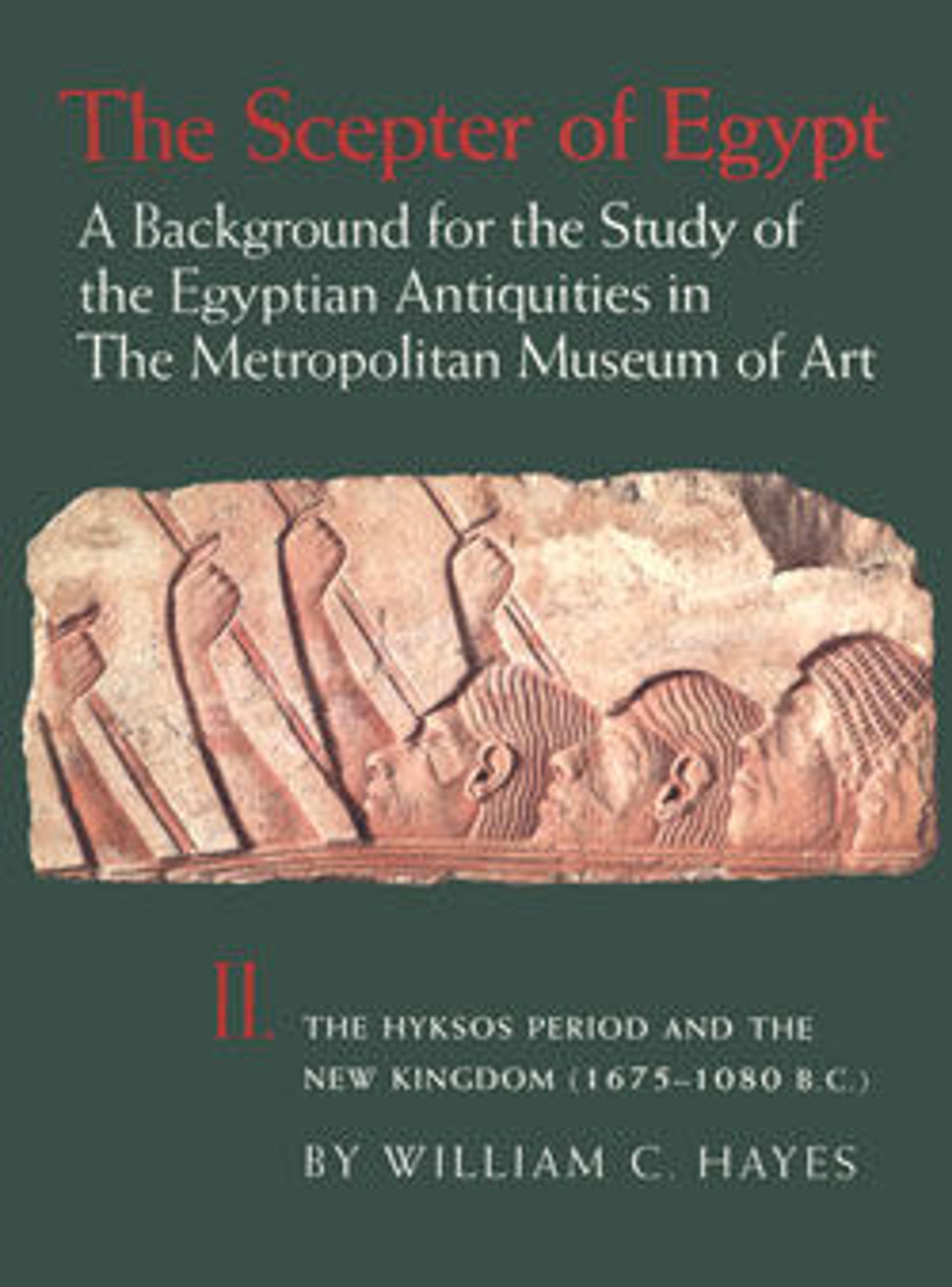Upper Part of a Door Panel
This upper portion of a shrine door bears the cartouches of Thutmose I (viewer left) and Thutmose II (right), parts of an inscription that has been incised and then filled with white paint. Certain anomalies in the inscription indicate that this panel was probabaly carved under Thutmose III to replace an original door in the funerary temple of Thutmose I. The original likely featured the cartouches of the latter king and his daughter Hatshepsut.
The background of the door is painted red, with a black border around the top and sides. Fragments of linen cloth are still stuck to the paint. A line of holes for bronze nails is visible framing the front panel; on the back are five rows of pegs to hold cleats. Traces of gilt remain on one of the kheper (beetle) signs, and blue pigment is still visible in several other places.
The background of the door is painted red, with a black border around the top and sides. Fragments of linen cloth are still stuck to the paint. A line of holes for bronze nails is visible framing the front panel; on the back are five rows of pegs to hold cleats. Traces of gilt remain on one of the kheper (beetle) signs, and blue pigment is still visible in several other places.
Artwork Details
- Title: Upper Part of a Door Panel
- Period: New Kingdom
- Dynasty: Dynasty 18
- Reign: Joint reign of Hatshepsut and Thutmose III
- Date: ca. 1479–1425 B.C.
- Geography: Probably from Upper Egypt, Thebes; From Egypt
- Medium: Wood (Abies sp. or Cedrus sp.), paint, linen, traces of gold, bronze or copper alloy
- Dimensions: H.121.9 cm (48 in); W. 58.4 cm (23 in); Th. 6.7 cm (2 5/8 in)
- Credit Line: Rogers Fund, 1922
- Object Number: 22.2.26
- Curatorial Department: Egyptian Art
More Artwork
Research Resources
The Met provides unparalleled resources for research and welcomes an international community of students and scholars. The Met's Open Access API is where creators and researchers can connect to the The Met collection. Open Access data and public domain images are available for unrestricted commercial and noncommercial use without permission or fee.
To request images under copyright and other restrictions, please use this Image Request form.
Feedback
We continue to research and examine historical and cultural context for objects in The Met collection. If you have comments or questions about this object record, please contact us using the form below. The Museum looks forward to receiving your comments.
